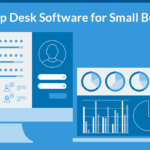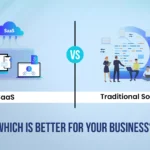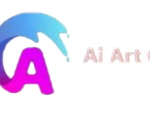Software licensing is an essential aspect of the technology world that defines how software can be used, modified, and distributed. With various licensing models available, it’s crucial for both developers and users to understand the differences and implications of each type. This article will explore the different software licensing types, their characteristics, advantages, and disadvantages, helping you choose the best option for your needs.

What is Software Licensing?
At its core, software licensing is a legal framework that governs the use of software. It sets out the rights and restrictions imposed on the end-user by the software developer or publisher. A license agreement typically specifies how the software can be used, whether it can be modified or redistributed, and any associated costs.
Importance of Software Licensing
Understanding software licensing is crucial for several reasons:
- Legal Compliance: Using software without a proper license can lead to legal repercussions, including fines and lawsuits.
- User Rights: Different licenses provide varying levels of rights and restrictions, influencing how users can interact with the software.
- Development Guidance: For developers, selecting the appropriate license can affect collaboration, code sharing, and business models.
- Security and Updates: Some licenses may dictate whether users receive support, updates, or security patches.
Types of Software Licensing
Here’s a detailed look at the most common types of software licensing:
1. Proprietary License
A proprietary license grants the user the right to use the software but retains ownership rights for the developer. Users must adhere to specific terms and conditions laid out in the license agreement.
Characteristics:
- Restrictions: Users typically cannot modify, distribute, or reverse-engineer the software.
- Cost: Often involves a one-time purchase or subscription fee.
- Support and Updates: Users may receive customer support and regular updates from the developer.
Advantages:
- Strong protection for the developer’s intellectual property.
- Usually includes comprehensive support and updates.
Disadvantages:
- Limited user flexibility and control.
- Can be expensive over time due to subscription costs.
2. Open Source License
Open source licenses allow users to view, modify, and distribute the source code of the software. These licenses promote collaboration and sharing within the software development community.
Characteristics:
- Accessibility: Source code is freely available.
- Modification: Users can modify the code to suit their needs.
- Distribution: Users can redistribute the software, often under the same license terms.
Advantages:
- Encourages innovation and collaboration.
- Reduces costs, as software is often free.
Disadvantages:
- May lack formal support and documentation.
- Users need technical expertise to modify and maintain the software.
3. Freeware License
Freeware licenses allow users to download and use software without paying. However, the source code is not available for modification.
Characteristics:
- No Cost: Users can use the software for free.
- No Modifications: Users cannot alter the software.
- Limited Rights: The developer retains full control over the software.
Advantages:
- Great for personal use and exploration.
- Allows users to try software before committing to a purchase.
Disadvantages:
- Often limited features compared to paid versions.
- No guarantee of support or updates.
4. Shareware License
Shareware is a type of proprietary software that is initially provided for free but requires payment for continued use or access to advanced features. Users can try the software before purchasing.
Characteristics:
- Trial Period: Users can evaluate the software before buying.
- Upgrade Options: Full features are unlocked upon payment.
Advantages:
- Allows users to test software before making a financial commitment.
- Can be a cost-effective way to access software.
Disadvantages:
- Users may encounter time limitations or reduced functionality in the trial version.
- Can lead to confusion regarding the payment process.
5. Subscription License
A subscription license allows users to pay for software on a recurring basis, typically monthly or annually. This model has become increasingly popular with the rise of cloud-based software.
Characteristics:
- Regular Payments: Users pay periodically to access the software.
- Access to Updates: Users usually receive the latest features and updates as part of the subscription.
Advantages:
- Lower upfront costs compared to perpetual licenses.
- Flexible payment options.
Disadvantages:
- Long-term costs can add up significantly.
- Users lose access to the software if they stop paying.
6. Perpetual License
A perpetual license grants the user the right to use the software indefinitely after a one-time payment. However, updates and support may require additional fees.
Characteristics:
- One-Time Fee: Users pay once to own the software.
- Lifetime Use: Users can use the software indefinitely.
Advantages:
- No ongoing costs after the initial purchase.
- Users can continue using the software even if updates are no longer available.
Disadvantages:
- Users may miss out on updates and new features.
- Initial costs can be high compared to subscription models.
7. Dual License
A dual license model allows the same software to be offered under two different licensing agreements. This can include an open-source license and a proprietary license.
Characteristics:
- Choice: Users can choose the license that best suits their needs.
- Flexibility: Developers can attract both commercial users and open-source advocates.
Advantages:
- Expands the software’s reach and user base.
- Provides options for users with different needs.
Disadvantages:
- Can lead to confusion regarding terms and usage rights.
- Requires careful management of both licensing agreements.
8. Creative Commons License
While not exclusive to software, Creative Commons licenses can apply to digital content, including software. These licenses allow creators to specify how others can use their work.
Characteristics:
- Customizable: Creators can select from various terms, including attribution, non-commercial use, and share-alike provisions.
- Broad Applicability: Can apply to various types of creative work, including software.
Advantages:
- Promotes sharing and collaboration while retaining some rights.
- Clear terms for users regarding usage rights.
Disadvantages:
- May not be legally enforceable in all jurisdictions.
- Users may not fully understand the terms of the license.
Choosing the Right Software License
Selecting the right software license is crucial for developers and businesses. Here are some considerations:
- Purpose of the Software: Determine whether you want to promote collaboration or retain control over your software.
- Target Audience: Understand your users’ needs and preferences, including their willingness to pay for software.
- Future Plans: Consider whether you want to monetize the software or allow it to remain free for public use.
- Legal Considerations: Consult with a legal expert to ensure compliance with licensing laws and regulations.
Conclusion
Understanding software licensing types is vital for both developers and users. Each licensing model has its unique characteristics, advantages, and disadvantages, influencing how software can be used and shared. By considering your specific needs and the implications of each licensing type, you can make informed decisions that benefit both your projects and your users.



















